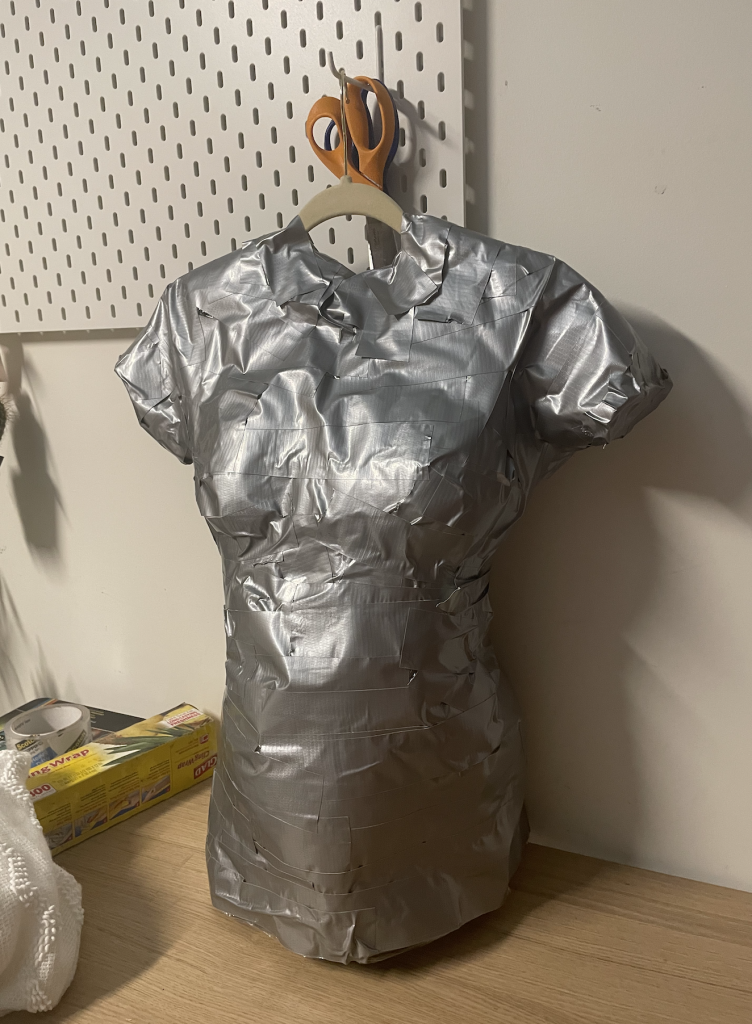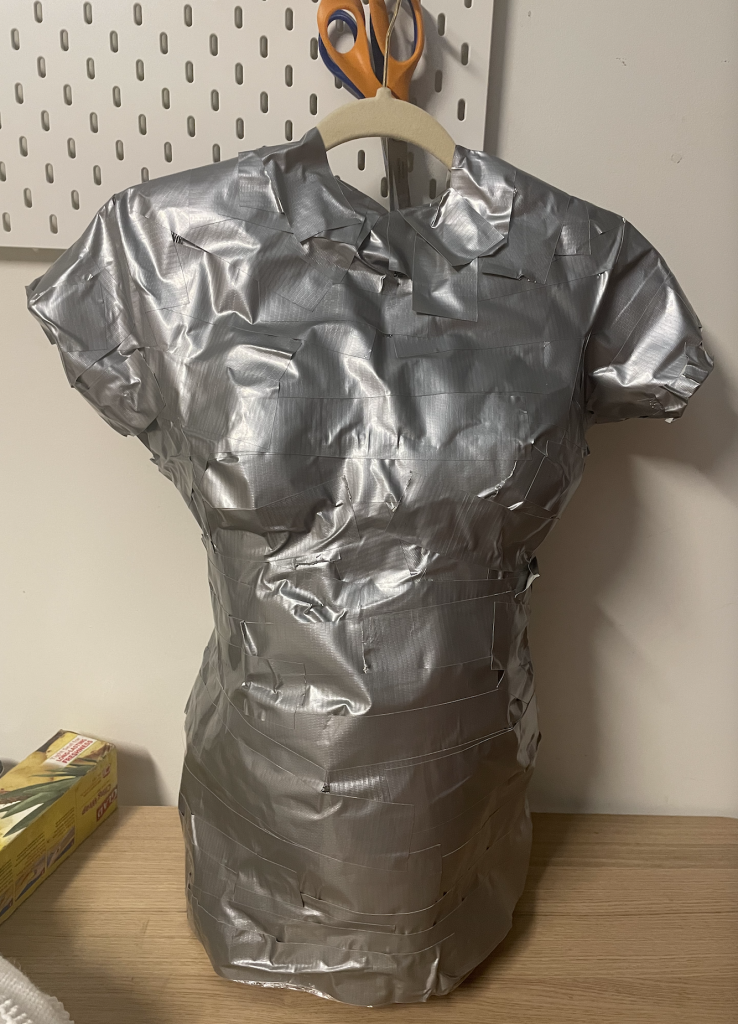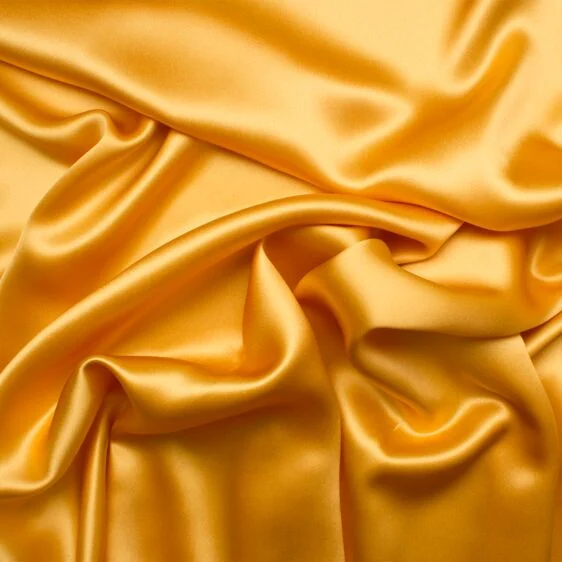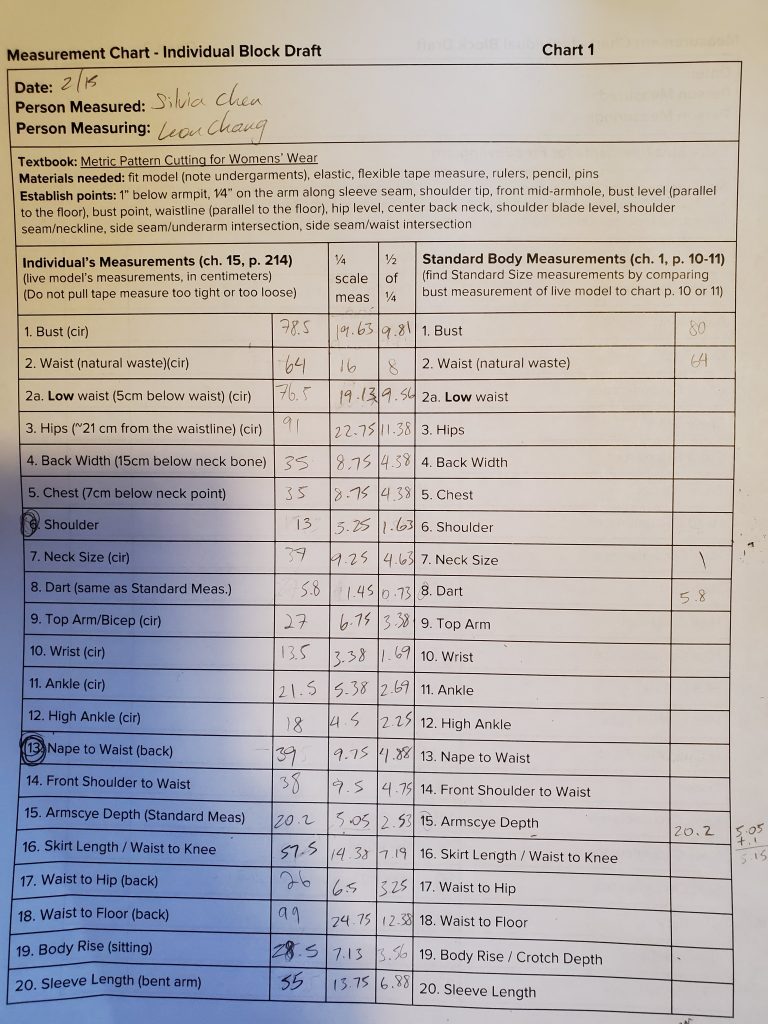Category: Gallery
Dress Form
Heres my dress form, I need more great stuff/ stuffing still


Cultural Garments – Silvia Chen
Overview of Korea: Modern
Summary:
When Korea first began its modernization movement in the late 19th century, it was largely influenced by acculturation, which refers to “a modification of the content of two cultures as a result of contact”. Western culture was seen as a symbol of modernization, leading to often forced adoption of western dress and fashion. Traditional costume was labeled as ceremonial, then adapted and modified for more modern lifestyles. Then, Western dress was integrated in Korea through original styles and imitations. Finally, current Korean fashion design now expresses influences from both the traditional hanbok and Western and international styles.
Reflection:
The history of Korean fashion reflects how countries that were industrializing and developing sought to replicate the “success” of Western nations. The history also reveals how imperialism affected lifestyles down to even the fashion, as Korean fashion evolved from its earlier Chinese influences to Japanese, then Western. It was also interesting to see how Westernized education and new technologies influenced fashion, as newer, Western-style education enforced Western-style dress. Furthermore, the popular 1920s “flapper” style became a symbol of the “new woman” in Korea.
Although the history of Korean fashion is interesting in observing the effects of multiple outside influences on a country, it also shows the suppression of traditional culture through modernization. However, Korea has recently begun integrating the traditional hanbok and other styles into their current fashion, showing a resurgence in acceptance of traditional styles.
Cultural Garments – Aditi
I chose an article called the Rites of Passage and Rituals in India by Jasleen Dhamijia. The article explores the deep connection of garments with many Indians lives. The ritual of weaving is considered as a form of yoga by some communities as it requires a disciplined rhythmic movement of the body. In some tribal communities, the act of weaving certain garments is rite of passage before occasions like weddings. Similarly, the article discusses the wearing of certain garments as a rite of passage, like before a child is born. Additionally, garments often have symbolic significance based on who has woven it, for whom and for specific occasions. For examples, priests from the Vagris community create paintings of the mother goddess with dye. Once complete, the garments become possessed by the goddess and act as her oracle.
I did not realize that garments and the act of weaving had this much significance in some Indian communities. Reading this article definitely let me appreciate the act of weaving much more. I have seen Indian weavers before but I had never really thought much about how difficult and specialized it is. I knew about some of these traditions but looking at the numerous different traditions from communities all around India. It’s interesting that these traditions with garments are a shared experience throughout different religions and cultures around India.
Caribbean Fashion – Elise Delgado
The article spoke about how the Caribbean is a very complex and diverse region. Native peoples to the islands had their own style of dress and colonizers brought different styles which ultimately mixed. Further mixing of style comes from tourism as well as the global fashion trends. We can also observe how the fashion communicates meaning or function. For example, Haitian Vodou has specific colors for celebrations and feast days. Similarly, some parts of the Caribbean such as the Bahamas dress a newborn in red or with a red ribbon to keep away the evil spirits. Cuba, Dominican Republic, and Puerto Rico have heavy Spanish influence in their colorful skirts and peasant blouses but involve African influence with their headwraps. Oftentimes we will see dress accompanied with dance or music. The other parts of the caribbean such as Jamaica, Trinidad, Antigua, Barbados, and the Bahamas involve “creole dress” which is a more deeply rooted African style. And we all know the Bermuda shorts that were a national style for men!
The content and specific sections about the different islands and peoples of the Caribbean is unique and inspiring. I find it fascinating that although these nations are in close proximity to each other, the diversity of cloth and its meaning is profound. From dress that has more religious meanings, to dress with spiritual meaning, to dress for festivals such as carnaval, it seems like such a rich cultural history is present in the way we look at dress. There are deep rooted historical and cultural influences in these traditions that really tell a story. I like how the narrative is constantly evolving and changing. It is important to save garments as they are relics of the past, a story that continues to unwind.
Cultural Garments: Tweed
TWEED, FEMININITY, AND FASHION, 1851–1918 by Fiona Anderson
This article summarizes the rise of tweed garments from the 19th century to the 20th century. The material was invented by Harris Tweed in Scotland. Tweed was pretty well known as a weather resistance material with a thick and slightly heavy body. Due to these characteristics, this material was mostly worn by men in specific garments like jackets, coats, and outerwear. The fabric slowly was being adopted by females, but it took around half a century for it to fully integrate to women’s wear. When women started wearing tweed, it was through underground buyers of the fabric from Scotland, and they wore it with very low profiles because women wearing mens wear material was mostly looked down upon. Once the British imported the materials for manufacture, tweed on women were slightly more commonized. It started off with women who often worked with men wearing these materials as jackets, and then it became ubiquitous to other women who enjoyed riding, golfing, or other sports activities. As the nature of the rise of tweed on women, the material started off being worn by upper and upper-middle class, and as the integration of tweed from London to New York occurred, many started making imitation tweed for the middle and lower class.
When I think of tweed in our 21st century, I mostly think of vintage, luxury, and Chanel. It was really interesting reading this chapter about tweed because I did not know its origins and the purpose of the material. Because nowadays tweed is only commonly seen in luxury fashion shows, imitation fast fashion brands like Zara, or on older women, it has a delicate yet expensive connotation to it. Looking into its cultural origin, I was surprised to learn that tweed originated from menswear and that it was common knowledge that it is weatherproof hence mostly worn during outdoor activities. I also find it very interesting that the marketing techniques back then still exist in the fashion industry today. In the chapter, it covers how once the British started manufacturing their own tweed, tailors had a Scottish name attached to their products to make their product more authentic as if it was made in Scotland. This I feel like is still a marketing technique for internationally imported goods using cultural context to appeal to a crowd who may be unfamiliar with the product. Another thing that really caught my attention was how the material integrated with womenswear design. One of the photos in the chapter shows how tweed was integrated into making women’s jacket and skirt with a corset silhouette and a puff shoulder detail that would never be found in menswear.
Cultural Garments – Sophia Huang

Innovative Application of Traditional Cheongsam Craftsmanship in Modern Design
By: Gao, Yingpei
This article talks about the history and the story of the Chinese cheongsam, also known as qi pao. The Chinese cheongsam is over 100 years old and first appeared in the first half of the 20th century. It then quickly gain popularity and became a common piece of clothing for women in China. The article also mentioned how cheongsam became popular because people thought that the previous traditional styles and crafts were old and “lacking in breakthroughs”. It is now one of the most ethnically representative Chinese costumes. It also comes in different designs and styles and was worn for different settings.
Something that the article mentioned that I never really thought too much about was the reason why cheongsam became popular. The article said it’s because people saw the previous traditional clothing as “old” and “lacking in breakthroughs”. I think that this shift to cheongsam has both positive and negative impacts. Before cheongsam became popular, many people in China wore han fu. Han fu has more than 3000 years of history and is known as one of the most traditional clothing that people used to wear. It also consists of many layers and it represents the Chinese culture. In the past, women are not allowed to show too much of their bodies. It was seen as inappropriate if women, or anyone, were to wear too little or if their clothing is not worn properly. However, as time passed and as people in China get more exposed to the other worlds, they became more and more accepting of other’s traditions. People also started to like the way those from the West dressed and they no longer saw wearing too little as a horrible thing. I think that this has negative impacts because although cheongsam still consists of designs inspired by Chinese cultures, it is still like a step away from traditional clothing. And as time passed, there are fewer and fewer Chinese elements left in their clothing.
At the same time, I also think that this shift has positive impacts. I believe that the shift to cheongsam gave women more ability and freedom to express themselves. Not only was it a tradition for women to wear many layers before cheongsam became popular, but women were also not allowed to reveal their bodies in front of people, other than their husbands. Cheongsam changed this. It is often made out of a thin piece of fabric and it has a high leg opening. It also better show a women’s body shape than han fu. I think that this shift allowed women to gain confidence and freedom. Confidence because they can now “reveal” more of their body and don’t need to hide in many layers of clothing. Freedom because they can now have more of a say of what to wear and what to and not to show others.
Cultural Garments – Ashley Burbano
Title: Latin American Fashion
By: Regina A. Root
Summary: The article is about clothing in Latin America and how it was impacted by Spanish Colonization. It was used to visually reinforce the social hierarchy or caste system that was forced upon the native by the Europeans. Clothing also served as another way to oppress the natives. The natives were forced to wear European clothing, which intentionally reinforced the overarching narratives of superiority and righteousness. The natives were also restricted in the types of fabrics they were allowed to wear, which also plays into the caste system. They were not allowed to wear taffeta or velvet, because these were fabrics reserved for the rich.
Reaction: This article made me sad, but it showed how deeply ingrained colonialism was/is in the cultures of Latin America. It also made me realize how significant and symbolic clothing can be in life. Like something like fabric type, which is now seen as simple and insignificant was used a form of oppression. It shocks me how something that had so much impact on people’s lives and wellbeing, is seen as frivolous now by most people.
I also felt sad that native people of Latin America were stripped of their culture and identity and that this was also done through clothing.
Cultural Garments – Jasmine Lee
The article I chose to read from the Berg Fashion Library was actually the chapter, “Style: The Endless Desire for a New Look” from Changing Fashion by Annette Lynch and Mitchell D. Strauss. The chapter discusses how the modern female silhouette emerged during the first two decades of the twentieth century. It discusses where the first true transformation began, durign the 1200s – 1400s in Europe, where dress relied heavily on ornamentation, surface design, and a wealth of materials for visual interest. The change to using silhouettes and the relationships between body and lines only started happening after the 1400s, with a dialogue developing between dress, painting, and sculpting. The chapter continues to discuss whether changes in fashion or internally driven or externally driven. The 20th century ideal of a modern woman was said to draw from elements of menswear to create a certain eroticism, greatly contrasting to the 19th century ideal, where womenswear relied on its heavy contrast to menswear. The rest of the chapter is spent discussing this notion while using famous examples throughout the times.
The article presents interesting viewpoints on what actually drives fashion. It is definitely not an easy question to answer, as there are many factors in such a big world. It seems to come to a conclusion that external events and trends going along in the world seem to play a slightly bigger impact than the internally driven work of the designers and makers who are still undertaking fashion exploration. The chapter also presents an interesting conclusion that the current fashion “cycle” or “era” of womenswear is driven by the perception of the one before it. While the 19th century had a more conservative feminine ideal, the 20th century took more liberties, with the 21st century continuing the trend.
The chapter comes to a rather satisfying conclusion that beauty ideals drive fashion changes throughout the centuries, but I would have liked to read more about where the beauty ideals originate from. I suspect this might be answered in other chapters of the book, where fashion is inspected through the lens of self, search for meaning, collective behavior, performance, and cycle. It also presents careful evidence of garments changing through the years to support its points. For example, Victorian underwear with bifurcated legs (as opposed to previous skirt-like undergrarments) had a reputation as taboo, but eventually became a sort of societally sanctioned expression of sexuality. The chapter is littered with this sort of analysis that provides a richness to historical fashion that can’t be found simply looking through museums.
In Class Activity 2/3 – Ashley Burbano
Material: Silk
Pictures:


Link of article
Useful Information:
-sandwich silk between layers of paper if slipping while cutting to prevent slipping
-use polyester or cotton thread
-use thin microtex needles in sizes 60/8, 65/9
Bonus:
Earliest evidence of silk was found at sites of Yangshao culture in China dating back to 3000 BC

